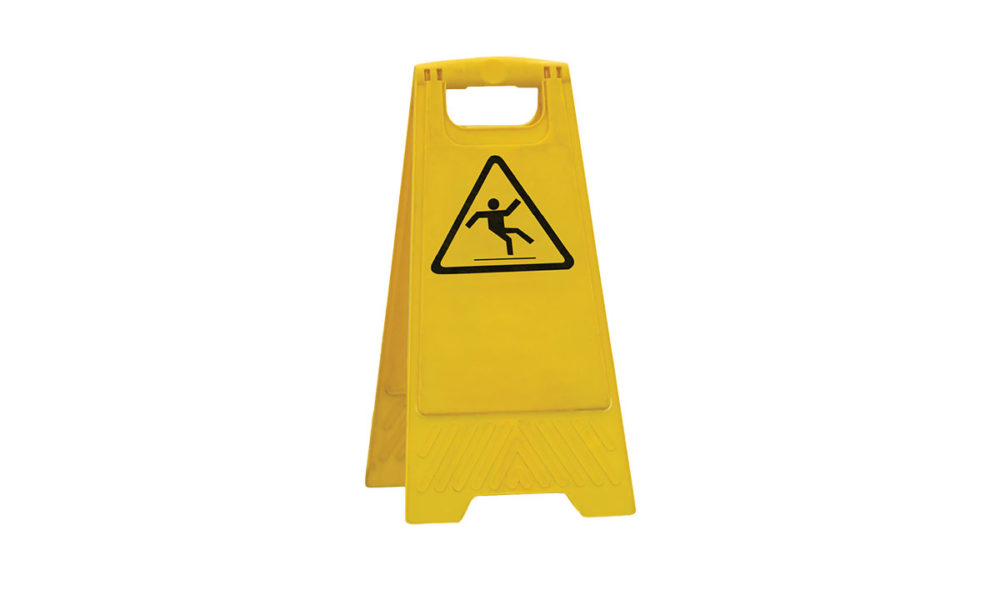Avoid slips, trips, and falls, especially during the indoor marching season.
Slips, trips, and falls happen. For some of us, they occur more frequently than for others! According to the Occupational Safety and Health Administration, slips, trips, and falls account for the majority of workplace injuries in the United States each year. We can speculate that these incidents account for a large number of injuries at indoor marching rehearsals and performances too. A simple risk assessment and a few proactive steps can prevent incidents this season.
Slip Hazards
The gymnasium and hallways that surround it have no shortage of waxed and polished floors. These surfaces can easily become a slip hazard. In the event of inclement weather (snow, ice, or rain), deploy all-weather floor rugs and hazard signs near entrances.
If tarps are used as part of the show design, be sure that they are taut on all sides and adequately secured to the floor. If possible, add traction to the mat surface. Performers could also wear slip-resistant footwear as part of the uniform design.
For future seasons where you may be a show host and planning on opening a concession stand, monitor for spills on the floor and clean up promptly. Designate an area for spectators with limited mobility to avoid stairs, utilizing ramps if available.
Trip Hazards
Trips are most often caused by obstructions in walkways. The same all-weather floor rugs that can stop slip hazards have the potential to create a trip hazard if the rugs are not firmly secured to the floor.
If electronics are being used for front ensembles, audiovisual and electrical cables should be routed to avoid walkways used by performers or spectators. Use of cable guards or tape can help to prevent trips and equipment damage.
Finally, conduct a walk-through inspection to identify and address trip hazards, including unnecessary clutter. A walk-through inspection is a great time to check the general emergency preparedness of the facility, especially before hosting your next event. Know the locations and accessibility of emergency exits, fire alarm pull stations, fire extinguishers, first aid kits, automated external defibrillators (AED), and emergency call boxes. Make sure that evacuation routes are clearly posted near each exit.
Fall Hazards
Props used by indoor ensembles may include ladders, steps, platforms, or ramps. Any height above ground level presents a vertical fall risk. Add traction to these surfaces to prevent slip hazards or falls. As the distance of vertical ascent or descent increases, drill design should consider the use of a spotter while the equipment itself should have adequate railings or handles.
Unfortunately, the pandemic has sidelined our activity for nearly a year. With so many other precautions on our minds, take a moment to ensure that a slip, trip, or fall injury does not sideline anyone in your ensemble this season. Whenever your next performance may be, break a leg! Wait … don’t do that!


